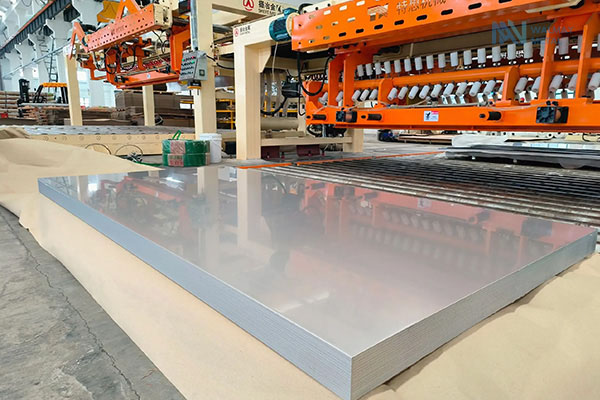Stainless steel is a high-quality material with a wide range of applications. It is a common material for making tableware, and stainless steel has multiple grades.
Walmay Steel introduces the difference between 316 and 304 stainless steel to you, and helps you understand the standards of food-grade stainless steel so that you can make a wise choice when buying stainless steel tableware.
What is 304 stainless steel?
304 stainless steel is a commonly used stainless steel material with many advantages. It can resist corrosion, high temperature and oxidation damage.
304 stainless steel has good processability and can be easily made into tableware of various shapes. In 304 stainless steel, the chromium content is at least 18%, which has corrosion resistance.
304 stainless steel also contains a small amount of nickel, which not only improves the gloss of tableware, but also enhances wear resistance.
What is 316 stainless steel?
316 stainless steel has higher corrosion resistance, especially in salt water and acidic environments.
316 stainless steel contains 2%-3% molybdenum, which makes it more durable than 304 stainless steel in corrosive environments.
304 vs 316 stainless steel performance differences
304 stainless steel is the most common type of steel. As a widely used metal, it has good corrosion resistance, heat resistance, low temperature strength and mechanical properties. It has good hot workability such as stamping and bending. There is no heat treatment hardening phenomenon (non-magnetic, operating temperature -196℃~800℃).
316 stainless steel has excellent corrosion resistance, atmospheric corrosion resistance and high temperature strength due to the addition of molybdenum. It can be used under harsh conditions. Excellent work hardening (non-magnetic).
304 vs 316 stainless steel application differences
304 application range:
Kitchen accessories such as sinks and splashbacks, pans, cutlery, tableware, cabinets; kitchen appliances such as refrigerators and dishwashers; household items such as indoor plumbing, water heaters, boilers, bathtubs, etc.
Heat exchangers; commercial food processing equipment, breweries, pharmaceutical production equipment.
Manufacturing nuts, bolts, screws and nuts; water pipes, storage tanks, indoor electrical housings, automotive interiors.
316 application range:
Chemical pipelines; pharmaceutical equipment; medical equipment and tools; structural steel and components in marine environments; manufacturing food, chemical and petroleum production and processing equipment; laboratory bench and equipment construction; building paneling in coastal areas; marine hardware pipes.
Welding
Between 304 and 316 stainless steel, 316 stainless steel has good welding performance. All standard welding methods can be used for welding.
When welding, 316Cb, 316L or 309Cb stainless steel electrodes or rods can be used for welding according to the application.
For the best corrosion resistance, SS316 welded parts need to be annealed after welding. If 316L stainless steel is used, no post-weld annealing is required.
Contact us
As a professional stainless steel supplier, Walmay Steel has become a trusted partner of customers with high-quality products, rich product variety and competitive prices.
Walmay Steel provides customers with comprehensive solutions to meet diverse needs.








